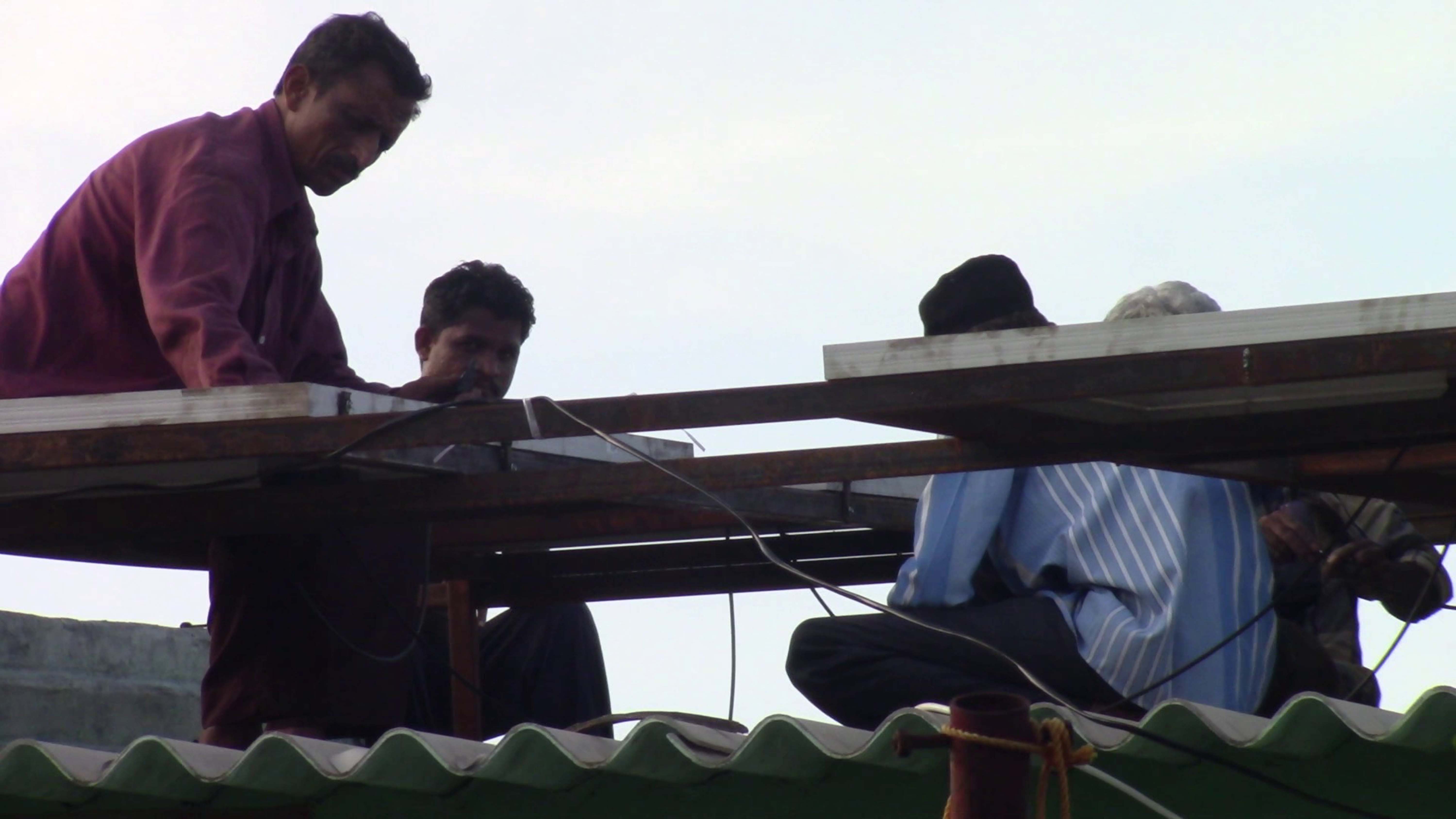
Solar electricity was first installed in the Rani Kajal Jeevan Shala school in Kakrana along with a solar hot water system.
Ever since Germany began investing in solar energy in a big way about a decade ago the efficiency and longevity of solar photovoltaic panels has increased greatly with a corresponding decrease in their cost. Moreover, the charge controller device too has evolved. Earlier charge controllers would just direct the solar direct current to the storage batteries and then an inverter would convert the direct current from the batteries into alternating current to be delivered to the load leading to a 20 per cent loss of power in the storage process. However, now there are prioritiser devices which during the day send the direct current from the panels directly to the inverter and through it to the load and only store the excess charge in the batteries for the night. Thus, there is an increase in efficiency due to these prioritisers also as even during the day solar power can be used to reduce grid power consumption without the use of batteries. 1000 watts of electricity from the panels can typically produce 5 kilowatthours (units) of electricity per day. The cost of installation for this inclusive of panels, batteries, power controlling units, electricals and set up is about Rs 100,000. Currently the going rate for retail low tension electricity supply is Rs 7 per unit inclusive of taxes and duties. Thus assuming that the inflation rate of the cost of grid power is equal to the commercial interest rate on the investment and so cancel each other out and that there is a replacement cost of batteries every five years for about Rs 35,000, it will take roughly ten years to recover the initial cost of installation of the solar system and the battery replacement. Thereafter, for the next fifteen years or so, assuming the life of the solar panels to be twentyfive years, the cost will be only that of replacing the batteries every five years.
The economics of solar power are therefore not very encouraging even now and it requires huge subsidies to popularise it and this is what Germany has done in a big way, given the benefits in terms of climate change mitigation. In India there is talk of subsidies but it is very difficult to actually get them. The subsidies are not given to the consumer directly but to the suppliers and given the culture of corruption in this country this leads to siphoning off of the subsidy and the supply of substandard solar systems to the retail consumer. There is not much support from the government to grow the market for decentralised solar systems either and so it is difficult to find reliable suppliers. The big corporate players in solar energy are not really interested in customising systems to the needs of small users. Especially ones like the Rani Kajal School which have special needs due to their location and the abysmal quality of grid power. After several fruitless interactions with the big corporate players, we finally ferreted out a small supplier in Indore, Dynamique Electronics, being run by a young electronics engineer named Ankit Verma. He has just started out about an year ago and is very hands on and innovative. Unlike the large corporate players who only want to sell their standard systems, Ankit was open to customising for our special needs. So together we designed a custom system and ordered its components from different suppliers so as to get the best quality and efficiency suited to our needs.
Later a bigger system of 2.5 kilowatts was installed in the centre in Pandutalab village which is capable of pumping water up from the tube well for irrigation and potable water uses. The office in Indore has a 1.5 Kw rooftop grid connected solar photovoltaic system.
